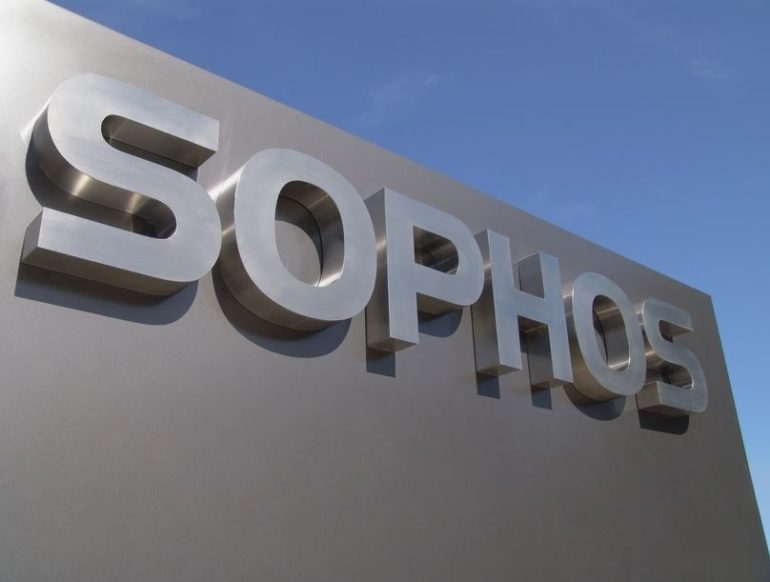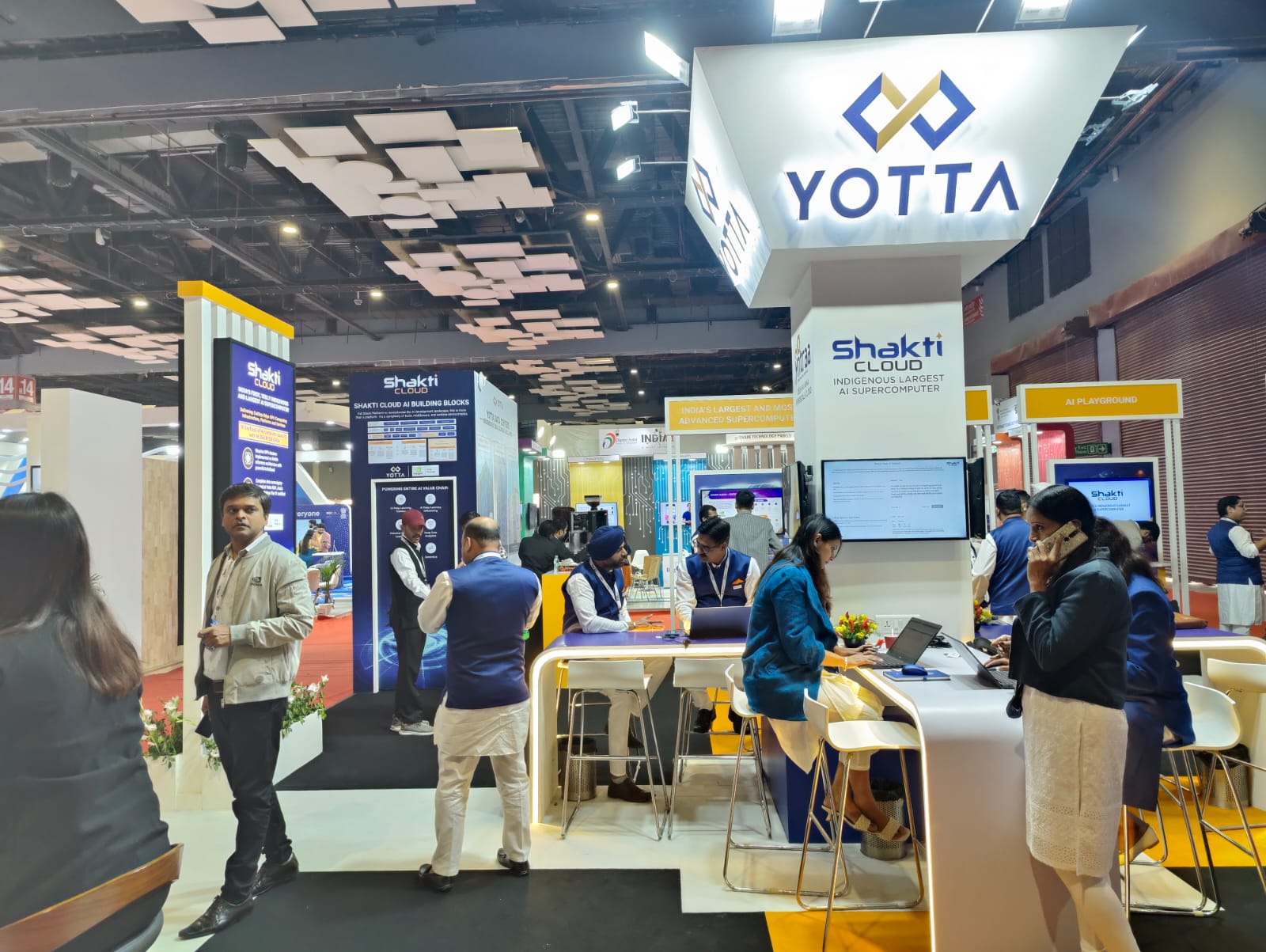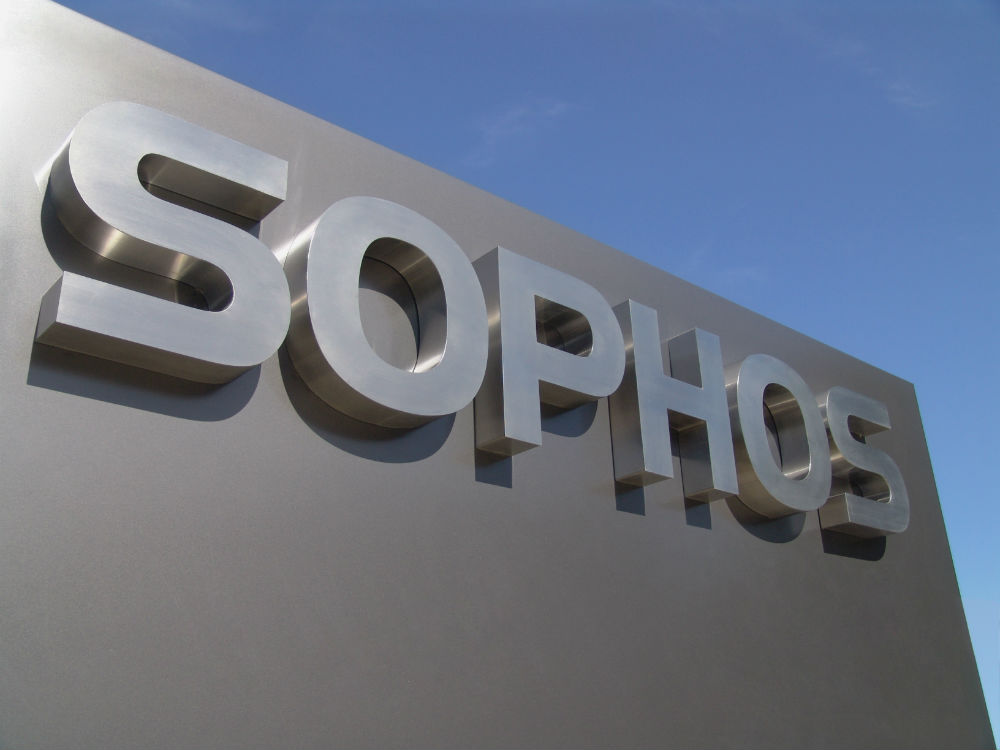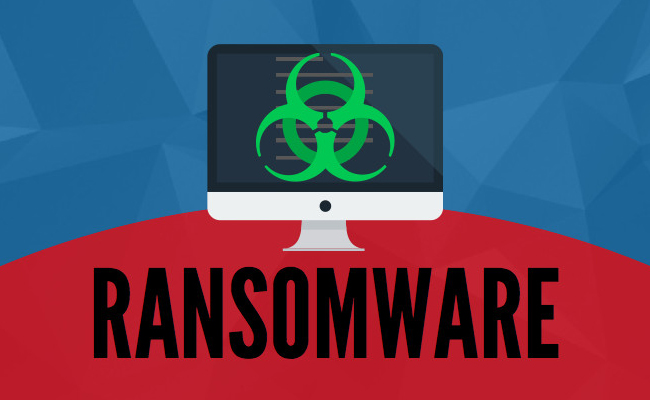News
Sophos launches Sophos intercept X for server to block cyber attacker

NEW DELHI: Sophos has announced Sophos Intercept X for Server, next-generation server protection with predictive deep learning technology that provides constantly evolving security against cyber threats.
Sophos’ deep learning neural networks are trained on hundreds of millions of samples to look for suspicious attributes of malicious code and prevent never-before-seen malware attacks.
SophosLabs research indicates that 75 percent of malware found in an organization is unique to that organization, indicating the majority of malware is previously unknown.
A recent Sophos survey reveals that two-thirds of IT managers worldwide don’t understand what anti-exploit technology is, leaving their organizations vulnerable to data breaches. Once inside a network, cybercriminals can use persistent and lateral moves to target and takeover servers to access the high-value data stored there, such as personally-identifiable information (PII), banking, tax, payroll and other financial records, proprietary intellectual properties, shared applications – all of which can be sold on the Dark Web or used for other types of attacks and monetary gain.
Servers can also suffer collateral damage from ransomware and run-of-the-mill cyberattacks. Attacks reaching servers can be more devastating to a business than attacks on endpoints, due to the critical data they hold.
Sophos demonstrates hacking and advanced exploit techniques that cybercriminals use in this Video of How Active Adversaries Attack in Real-Time (also found on Sophos.com/Servers).
“Servers are the bullseye for cybercriminals because they store valuable information and have a broader, system-wide organizational purpose than individual endpoints. An entire company could get potentially wiped out if cybercriminals infiltrate its servers with ransomware or malicious code, or exploit vulnerabilities to gain access. Once breached, attackers can get deep in the network and have the ability to do some serious damage, as well as exfiltrate data,” said Sunil Sharma, Managing Director Sales for Sophos India & SAARC.
“Cybercriminals use stolen information for their own spear-phishing campaigns and crime sprees, or they could resell it at a premium price on the Dark Web or to a private network of buyers. Sophos threat experts have seen access to compromised servers for sale on the Dark Web, in addition to the poached data itself – a bonus for cybercriminals, but a double whammy for businesses,” he added.
Attackers also use breached servers as proxies to redirect traffic to malicious websites and are now installing cryptominers on server farms and cloud accounts, so they can generate crypto-currencies by stealing a company’s CPU, RAM, electricity, and other resources. The motives of cybercriminals based on how servers are utilized, what’s stored there and what can be leveraged for multiple crimes underscores the need for predictive, server-designed security with advanced anti-exploit technology that helps protect even unpatched systems.
“According to The Dirty Secrets of Network Firewalls research conducted by Sophos, 89 percent IT managers in India opined that stopping malware threats have become harder over the last year and only endpoint or firewall is not sufficient to protect our data. It’s time we realize that servers are critical infrastructure, but they are often overlooked in the endpoint strategy of many companies,” said Sharma.
“It’s not enough to simply install traditional endpoint protection on servers because they demand additional tools and features, such as cloud workload discovery, including Microsoft Azure and Amazon Web Services, and protection to mitigate risk from rogue or forgotten IT assets. The survey also said that 65% Indian respondents completely agree that their current defenses are not sufficient to block cyber threats – be it network, endpoint or server. Server-specific protection is necessary to a successful layered security strategy to reduce the risk of a data breach. Combined with Sophos’ Synchronized Security intelligence sharing and easy management from our Sophos Central dashboard, Intercept X for Server is a powerful addition that helps defend businesses from becoming the next victim,” he added.
The need for server protection exists in organizations of all sizes, with smaller businesses being potentially at more risk than larger, better resourced enterprises as Frank Dickson, research vice president, Security Products with IDC commented, “The small- and mid-sized markets (SMBs) face challenges for server protection as they need the same level of protection as their enterprise counterparts, yet protection must be in an extremely easy to use offering,”
“Additionally, sadly, SMBs are too often tempted to use under powered, inappropriate PC endpoint offerings to protect servers as a way to save cost, forcing SMB server security vendors to provide compelling, affordable offerings that are also appropriate for a smaller or understaffed IT department,” Dickson added
Regarding Sophos’ approach directly, Dickson continued, “Sophos addresses the ease-of-use factor by integrating their products on Sophos Central, so there’s one dashboard for Partners and customers to manage each security layer regardless of being on premise or in the cloud. The new Intercept X for Server significantly advances server protection with deep learning, anti-exploit and other key technology elements. The anti-exploit technology has a client right on the server, a necessary requirement based on the manner in which hackers leverage server vulnerabilities to breach systems. Given the readily available and inexpensive exploit kits for sale on the Dark Web, even cybercriminals with little expertise can launch powerful attacks, making sophisticated, server specific protection a fundamental requirement.”
“Sophos understands that servers need their own set of security criteria, like the lockdown feature in the current server solution, and the new ability to discover cloud workloads. Many of Riverlite’s clients, companies with under-staffed IT personnel, require us to keep cloud deployments secure and free from disruption,” said Simon Barnes, principal consultant at Riverlite in St. Neots, Cambridgeshire, UK.
“Having assets in the cloud or migrating and using public clouds can be daunting to any business. It’s important that MSPs have the right security in place to protect these ‘invisible’ servers, which are easily forgotten from an overall security strategy. This type of exposure weakens a company’s security posture. If any unprotected server is attacked it can wreak havoc on an entire business. We’re looking forward to upgrading and adding Intercept X for Server to our customers’ security portfolios,” added Barnes.
Syndesi is a Managed Service Provider (MSP) with particular interest in the unique cyber security challenges faced by the education sector, including data theft, disruption of operations and compromised technology assets. “For attackers, K-12 schools are a particularly attractive target because they store and handle the personal data of students, parents and staff. Many school districts are vulnerable due to budgetary constraints or limited IT resources, making them an easy target,” said Paul Gibbs, vice president of Syndesi Solutions, based in Athens, Alabama.
“An integrated, layered security system that stops ransomware, malware and data theft is paramount. We can now add Intercept X for Server with deep learning technology and Synchronized Security to strengthen the protection of sensitive assets stored on school servers and at other customer sites. We’ve already seen situations where Sophos Intercept X has blocked ransomware on endpoints almost immediately after its first appearance. If servers are hit with ransomware or malware, it’s devastating, so we’re excited for this quick response and the synchronized intelligence-sharing at the server layer as well,” added Gibbs.
Sophos Intercept X for Server is available from registered Sophos partners worldwide. Additional information can be found on Sophos.com.
News
Yotta’s Cloud Data Center in GIFT City, Gujarat goes live

NEW DELHI: Yotta Data Services, an end-to-end Digital Transformation service provider, has announced that its state-of-the-art data centre facility, “Yotta G1”, located in GIFT city, Gandhinagar is ready for service (RFS).
The opening of this data center marks the debut of Yotta in Gujarat and progresses the company’s mission to provide digital services in India’s high-growth markets.
G1 is Yotta’s fifth data center facility in the country. It joins four large operational data centers, two of which, at Navi Mumbai and Greater Noida are part of hyperscale campuses. Yotta G1 is uniquely located inside the International Financial Services Center (IFSC) zone of Gandhinagar’s Gujarat International Finance Tec-City (GIFT city).
G1 represents an investment of more than INR 500 cr. over five years across critical non-IT and IT / Cloud / AI compute infrastructure. The data center has a capacity of over 350 high-density racks and 2 MW power (which can be scaled further as per demand). The facility is designed to meet the most demanding digital needs of its customers, who may be located within GIFT City or anywhere in the world, by seamlessly delivering fault-tolerant facility infrastructure, high-performance Cloud compute and storage infrastructure, advanced physical and cyber security, unmatched connectivity, and steadfast sustainability.
For large global enterprises operating in the GIFT City IFSC zone, the G1 data center functions as a potential data embassy, whereby their data stored is subject to the laws and regulations of their home country, thus allowing them to maintain sovereignty over their data, even when stored in India. By storing data in a physically different location, global enterprises can ensure continuity of operations in case of major disruptions within their borders. The data center’s location also ensures compliance with the IFSC regulations, providing businesses in the zone with distinct advantages like free foreign exchange convertibility, a liberalised regulatory environment, and business-friendly policies. It also helps enterprises adhere to IFSC’s compliance requirements, including being mandated to host their data within the IFSC zone.
Commenting on the announcement, Darshan Hiranandani, Co-founder and Chairman, Yotta Data Services, said, “The state of Gujarat, with GIFT City, has been at the forefront of providing a viable and sustainable platform for global businesses to set up base in India. The setting up of the IFSC zone is a further testament to their vision for financial services companies. We are proud to support this vision of the Gujarat government with a state-of-the-art data center within the IFSC zone, providing the latest and best in cutting-edge technologies to help businesses set up and scale their businesses while also adhering to all regulatory requirements.”
Adding to this, Sunil Gupta, Co-Founder, MD & CEO, Yotta Data Services, said, “Yotta’s G1 marks a pivotal milestone in delivering high-end data center, Cloud, AI compute, storage, connectivity and cybersecurity services to enterprises both on a global and local scale in the Gujarat region. Besides serving the domestic enterprises within and outside GIFT City, our data center shall serve as a potential data embassy for global enterprises, enabling them to adhere to their respective country’s laws while offering a dependable and secure locale for offshore data storage.”
G1 data centre stands distinct in GIFT city for being a data center offering more than just colocation services. True to Yotta’s stature as the end-to-end digital transformation partner of choice for enterprises, G1 brings forth a suite of key features, ranging from advanced data security and customised business solutions to an indigenous hyperscale cloud offering, AI-GPU compute offering, state-of-the-art infrastructure, cybersecurity expertise, seamless integration with managed IT services, 24/7 customer support, cost optimisation, and an overall competitive edge.
This announcement follows on the heels of Yotta’s recent launch of its cloud services – Shakti Cloud and Yntraa Cloud. Powered by NVIDIA’s top-of-the-line GPUs, Shakti Cloud is India’s largest & fastest AI-HPC supercomputer, delivering cutting-edge GPU computing infrastructure, platforms, and services, including Infrastructure as a Service, Platform as a Service, and Software as a Service. Yntraa Cloud, on the other hand, is a truly indigenous hyperscale cloud platform at par with global cloud platforms, offering an exhaustive range of cloud products and services.
News
Optiemus Infracom joins hands with Corning International

NEW DELHI: Domestic contract manufacturer Optiemus Infracom has entered into a joint venture with US-based speciality glassmaker Corning International to set up India’s first manufacturing facility for producing high-quality finished cover glass parts for the mobile consumer electronics industry.
The collaboration between both the companies will help expand India’s electronics manufacturing ecosystem, as the Indian government strengthens its Make in India initiative. As a part of the joint venture, the companies strategically aim to set up a world-class manufacturing facility in India, powered by cutting-edge technologies and processes.
Driven by a shared commitment to innovation and technological excellence, this collaboration will pave the way for the manufacturing of “Made in India” finished cover glass parts for use in mobile consumer electronic devices, and other cover glass applications, to meet the needs of next-generation mobile consumer electronic devices.
The joint venture signifies a powerful synergy between Optiemus’s deep domestic industry and manufacturing knowledge of electronics and telecom market and Corning’s globally-acclaimed expertise in advanced glass technology. By combining these strengths, the joint venture aspires to not only establish cover glass manufacturing capabilities and capacity in India, but also to contribute significantly to the creation of jobs and skill development within India’s thriving technology sector, the companies said in a statement.
Ashok Kumar Gupta, Chairman, Optiemus Infracom, said, “It is a matter of great pride for us to actively contribute to the growing manufacturing ecosystem in the country. With this joint venture, initiated in line with the vision of Hon’ble Prime Minister of India of ‘Make in India’ programme and the “Atmanirbhar Bharat” initiative, we are committed to make available world-class high-quality products for global and local brands.”
“Embarking on this new journey, we intend to emerge as one of the top manufacturers of finished cover glass parts for use in mobile consumer electronic devices in the next five years. Our collective expertise in innovation, design, and manufacturing, will provide holistic solutions for the brands,” Gupta added.
5g
MediaTek Catch-up with Tech: Infinix Zero 30 5G with Dimensity 8020 launched

NEW DELHI: Chipset maker MediaTek, which claims to power more than two billion connected devices every year, hosted ‘Catch-up with Tech’ in collaboration with handset brand Infinix on August 28 to share insightful and engaging conversations about the new-age smartphones and innovative technologies powering everyday lives.
The meet-up threw the spotlight on the MediaTek Dimensity Auto, Satellite solutions and Generative AI along with an extensive showcase of newly-launched Infinix Zero 30 5G powered by MediaTek Dimensity 8020, Infinix GT 10 Pro powered by MediaTek Dimensity 8050, and Infinix QLED TV powered by MediaTek.
In terms of specs, the Infinix Zero 30 5G is tailored for young storytellers and creators, featuring the first-ever smartphone to deliver 4K 60fps video recording from its 108 MP OIS rear camera and ultra-high resolution 50MP front camera. The Zero 30 series powered by MediaTek Dimensity 8020 is said to be a game changer for the front camera vlogging experience along with being the slimmest curved AMOLED smartphone in the segment with glass and a vegan leather back panel. It also claims to be one of the most premium-looking devices in the segment.
The event witnessed a panel discussion moderated by Anuj Sidharth, Deputy Director Marketing & Corporate Communications, MediaTek and included expert panelists from Infinix, MediaTek and two renowned professional photographers.
“With the fifth edition of Catch-up with Tech, we aim to bring consumers closer to the technology and enable them to make informed buying decisions based on their diverse needs. In collaboration with Infinix, this meet-up is in-line with MediaTek’s vision of technology democratization and making innovative technology accessible to everyone,” said Anku Jain, Managing Director, MediaTek India. “The MediaTek Dimensity 8020 in Infinix Zero 30 5G brings faster displays, brilliant cameras and ultra-fast performance. Further, MediaTek Imagiq technologies enrich the capture experience by combining dedicated AI, imaging processors and accelerators to provide incredible results,” he added.
Anish Kapoor, CEO, Infinix Mobile India, said, “Featuring India’s first 50MP 4K 60 fps video recording, Infinix Zero 30 5G is primed to redefine smartphone imaging capabilities, setting a new standard for the creators and vlogging enthusiasts. Our collaboration with MediaTek has played a pivotal role in shaping our exceptional smartphone portfolio, and the Zero 30 5G stands as evidence of our unwavering commitment to innovation and delivering unmatched experiences to our users. The display and design of the device represent a leap forward in smartphone technology. As Infinix Zero 30 5G hits the shelves, we are positive that our customers will find this new offering as exhilarating as we do, further empowering creators to capture their story like never before.”
Radhakrishnan Chakyat, a photography evangelist, founder and host of Pixel Viilage, said, “Infinix Zero 30 5G smartphone powered by MediaTek Dimensity 8020 chipset has amazing hardware features, an excellent camera, dual-view video mode and is primed for optimal content creation and saves a tremendous amount of editing time.”
Aarzoo Khurana, a wildlife photographer, said, “Over the last few days, I clicked various pictures and recorded a few videos with the newly-launched Infinix Zero 30 5G powered by MediaTek Dimensity 8020, and the experience has been truly inspiring. Infinix’s smartphone’s OIS feature helps content creators click shake-free pictures and the front camera, which is extremely sharp and detailed, enables content creators to click countless selfies.”













